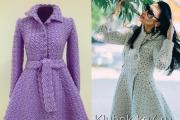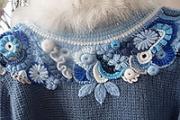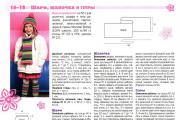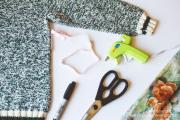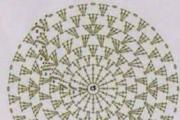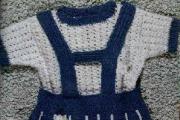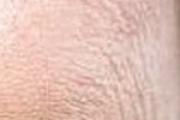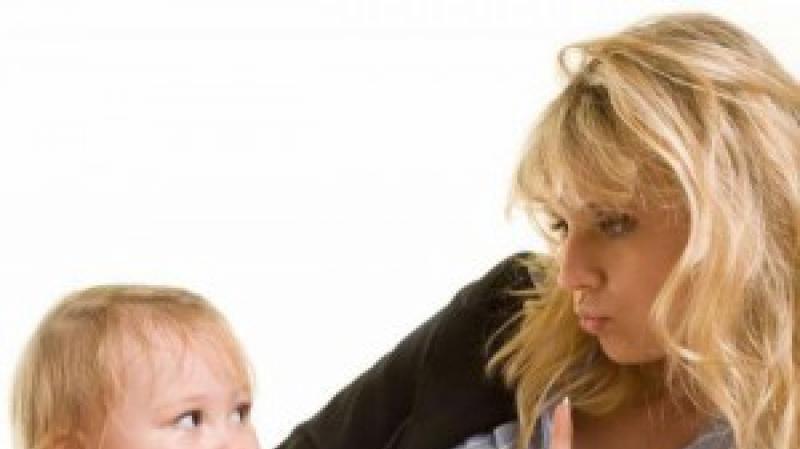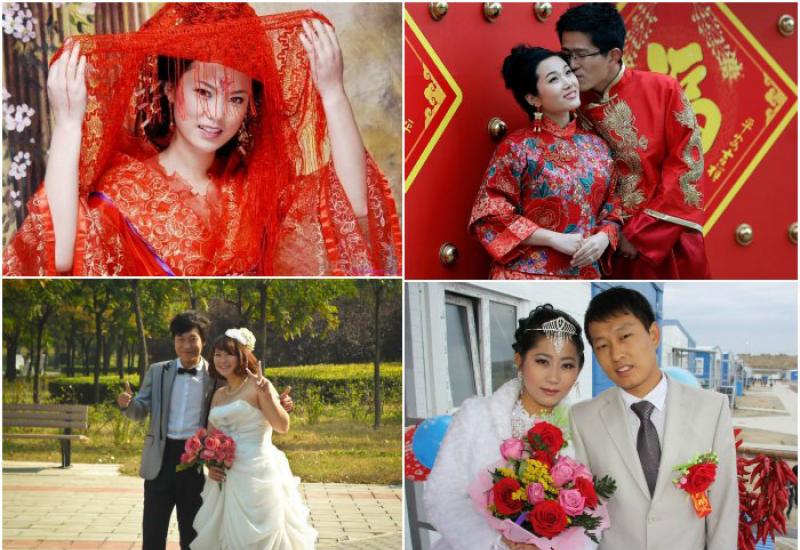Small crocheted toys. Crocheted and knitted toys with patterns and descriptions master class
The shelves of children's stores are full of a wide variety of toys. If you want and have the opportunity, you can buy anything you want. However, knitted toys will always be more useful and interesting for both children and adults. It is important that such a toy can be made together with the child, which means that he will value it more than others. Let's learn how to make them.
A knitting toy is much more interesting than stamped store-bought ones.
Cool toys that you knit will always delight outside observers. After all, this is painstaking work that not everyone will decide to do, and all because without basic knitting skills this cannot be done. Most often, cats or hares are knitted using a hook, but due to the knitting structure, these toys turn out to be rigid and frame-like. And knitted ones are soft and delicate products. Whether they will be bright or in a calm tone depends on the quality and color of the yarn you choose.
But you need to start work, of course, with an idea, and it can be built on the following:
- A cat, a hare or another animal, or maybe a fantasy toy, a schematic image that needs to be drawn.
- Toy size. For beginners, you should not start with both large and very small products. It is better to knit a medium-sized bunny than to abandon it due to overestimating your strength regarding its size and ability to create it, because small toys are made from very thin yarn, which only specialists can work with.
- Yarn selection. Its thickness, color, base - this is what will determine the outcome of your work by at least 40%. It is also important who will play with her. If this is a child, then you need to take either cotton-based yarn or high-quality viscose, which is very delicate and soft.
- Skills. We knit complex patterns only after we have mastered the simplest ones.
- Your imagination and efforts. This is probably the basis of the whole idea, as they say, if you really want it, you can move mountains.
Gallery: knitted toys (25 photos)


























Volumetric heart with knitting needles. Mk free (video)
How to make a knitted hare with your own hands: lessons and description step by step
Most often, craftswomen share their patterns according to which they knit toys, but you can do it yourself without any difficulties.
First, let's decide on the bunny's diagram:
- torso;
- head;
- front legs;
- hind legs;
- ponytail

Most often, craftswomen share their patterns according to which they knit toys, but you can do it yourself without any difficulties
The job description is even simpler:
- All elements are knitted in tight satin stitch or garter stitch. Almost all of them are rectangles or squares, which are pulled together at the ends with threads to form the desired shape.
- Fill the product with holofiber or other filler and grind all the parts together.
- Embroider the nose, mouth, eyes. The latter can be supplied with special ones, which are sold in any handicraft store.
How to knit a New Year's toy: master class
Knitted New Year's toys will look good both on the Christmas tree and just in the decor of your home. Making them with your own hands is not at all difficult. To make it easier to understand the essence of such work, let's look at two master classes on them.
New Year's star
For work you will need:
- stocking needles;
- yarn of several bright colors;
- hook size 3-4;
- any decor as desired.

Knitted Christmas toys will look good both on the Christmas tree and just in the decor of your home
How to do:
- Cast on the knitting needles the same number of stitches, which will become the base of your star. There must be five wedges.
- Next, take it like this: three rows in one color, and decrease along the edges by one loop; We introduce a new thread, knit three rows again, decrease along the loop and make the transition to a new color.
- Continue working until you need to close off the final loops.
- After closing the loops, we hide the unnecessary remnants of threads in their color range.
- Using a thread of the same color, crochet an air chain from the end of the star's ray, connect it into a ring. The toy is ready.
Christmas plush balls
For work you will need:
- any knitting needles;
- yarn of suitable size and density, different colors;
- hook.
How to do:
- Knit squares of different colors.
- Each of them is treated along the edges with thread, which must be pulled evenly through the knitting loops.
- Pull the ends of the thread together.
- Slightly expand the resulting screed and tightly fill the toy with filler.
- Pull the threads together and reinforce them with stitching.
- Using a crochet hook, make a chain of air loops that are sewn to the ball.
The balls turn out simple and beautiful, if you want to make them unusual, either dilute the knitting with a pattern or different color ranges.
Knitting a cat using yarn knitting needles: step-by-step work
If you already have your own dollland, consisting of knitted beauties, then they urgently need a kitten or cat. There can never be too many soft toys, so it’s time to get acquainted with the detailed progress of work on their creation.

You can never have too many soft toys
The work looks like this step by step:
- The body is knitted. Always start there. This will further allow you to visually orient yourself in the correct proportions of the head and limbs. The exception is the tail; it can be made either small and stubby or large and fluffy. Usually this is a rectangle, which, after being connected with threads into a pipe, is filled and the desired bends or shapes are formed. Fasten all points with a thread threaded into a needle.
- Head. Nowadays it is not necessary to make the head perfectly proportional; on the contrary, many newfangled toys always have a disproportionately large head and a funny expression of the muzzle. The principle of knitting is the same, only a rectangle connected into a tube, after filling, is sewn to the body horizontally, slightly pulling its edges towards the neck.
- Paws. You also need a rectangle, one edge of which needs to be rounded by decreasing the stitches. This will be the heel or toe area. And after filling, pull the second edge tightly with thread and stitch it to the body in the right place. The hind legs need to be made a little longer than the front ones, but if you have a fancy cat, then maintaining the proportions is not necessary.
- Tail. It requires a non-isosceles rectangle. The narrow part will be at the body, and the wide part will determine its fluffiness. The rest of the steps are the same: filling, tying, stitching.
- Ears. It’s easier to make them with a crochet hook, but this will make them stand out significantly from the rest of the work. You can also knit a rectangle with knitting needles, fold it in half, and again, so that you get triangles that need to be sewn to the head.
- Decor. And then - as your imagination tells you. If you have experience in knitting, then you can make clothes for your cat. It can be knitted or made of fabric. Decorate it with bows or a hat, embroider a mustache or glasses. Your kitten is ready.
Useful information
No need to skimp on yarn. After all, if it is of poor quality, then after washing your toy its shape may be significantly deformed, which means your work will go down the drain.
Do you want to please your baby with a unique gift? What if you crochet toys, spending very little time and materials on it. Let's create exclusive things together that will bring you and your loved ones an incredible amount of warm and tender emotions. We'll show you simple and affordable DIY toy knitting patterns, we’ll tell you about the unique umigurumi technique and reveal the secrets of the wonderful art called handmade.
You probably know that handmade toys are much better than store-bought consumer goods. When you create a thing, you fill it with love and positive energy, which is very important when creating children's toys. Children love to touch, smell and taste all the surrounding objects, so it is better to give them toys that are soft, natural, and most importantly, completely safe for the baby’s health. So caring mothers and grandmothers happily get down to business, creating crocheted knitted toys.
We have prepared this wonderful master class, during which we will tell you in detail how to knit a funny little chicken using the Japanese amigurumi technique. This knitting is the easiest for beginners, since the chicken is very tiny. But he is so charming - let's start knitting quickly.
First stage: knitting the head 

- First row: knit 6 single crochets into an amigurumi ring.
- Second row: add another 6 tbsp. without a crochet.
- Third row: add another 6 tbsp. without a crochet.
- Fourth row: add 2 tbsp. single crochet in one loop x 6 times.
- Fifth row: + 3 tbsp. single crochet in one loop x 6 times.
- Sixth row: + 4 tbsp. single crochet in 1 loop x 6 times.
- Seventh row: + 5 tbsp. single crochet in 1 loop x 6 times.
- From the eighth to the fifteenth row we knit 42 single crochets.
- From the sixteenth to the nineteenth row of the row we decrease the loops in the same order in which we added them.
- We thread the ends of the threads and fill the product with padding polyester.
Second stage: knitting the body

- For the first row we make an amigurumi ring of 6 single crochets.
- From the third to the fifth row we make an increase, as when knitting a head.
- From the sixth to the eleventh row we knit 30 single crochets.
- We knit the twelfth and thirteenth rows in decreasing order.
We finish knitting with a connecting stitch, leaving a long edge of the thread, with which we will connect the head and body. We fill the head with padding polyester and tie the parts together.
Third stage: knitting wings

- We knit an amigurumi ring from 6 single crochets.
- Add 6 single crochets.
- Let's make one more addition.
At the end there is a connecting post. Leave a long thread and fold the circle in half.
Stage four: knitting the beak

- The first row is a standard ring of 6 columns.
- The second row is an addition of 3 columns.
- Third row - knit 9 single crochets.
Fifth stage: knitting the paws
- Ring.
- Addition of 6 columns.
We knit 2 parts. Sew the legs and beak to the body. Let's make eyes.
Stage six: knitting a flower

- First row: we knit a chain of 39 chain stitches and close the ring with a connecting post.
- Second row: knit 39 single crochets.
- Third row: single crochet, skip 1 single crochet from the previous row and knit 5 double crochets from one loop and again skip a single crochet from the previous row. We do 10 such repetitions.
Seventh stage: knitting a pot

- From the first to the sixth row we knit in the same way as we did the torso and head.
- Seventh row - make 36 single crochets behind the back wall of the loop.
- Eighth row: add 11 single crochets in one loop 3 times.
- From the ninth to the twelfth row we knit 39 single crochets.
- Thirteenth row: we knit 39 single crochets behind the front wall of the loop.
- We knit 39 single crochets.
We complete the knitting with a connecting stitch. The bottom of the pot can be strengthened by gluing a circle of cardboard.
Eighth stage: knitting grass 
We will tie the green threads to the pot, behind the back walls of the thirteenth row.
- We make 5 air loops.
- In the second loop from the hook we make a connecting post.
- We make a single crochet, and then a half double crochet.
- We knit a double crochet.
- To complete the triangle, we make a connecting post in 3 half loops.
- We knit the next 5 chain stitches and repeat the whole process.
- We knit 13 triangles around the entire pot.


All the elements of our amazing toy are ready.
In order to better practice and make crocheted toys yourself, we suggest you watch several video instructions with a detailed step-by-step description.
Crocheted toys with patterns and descriptions
Handmade products always look exquisite and exclusive. That's why both kids and parents love them so much. We have already talked a little about the preferences of children, it remains to add that adults are also not averse to receiving a unique toy made by themselves as a gift. A small product can be worn as a keychain or talisman, but it is better to sit a soft cat or a medium-sized hare in front of a computer monitor or on a shelf near books. Let it please your heart, eyes and soul. And to make your hands happy, we have collected crocheted toys for you with patterns and descriptions, with detailed photos and video instructions. You will receive all this knowledge completely free on our page, and very quickly you will be able to turn it into reality. Learn to make unique things and delight your loved ones with unique gifts!

For example, these small pumpkins can become a unique decoration or serve as symbolic gifts for Halloween. Please read the instructions and start creating right now.


If you lack bright colors in your life, a rainbow baby elephant will come to the rescue. Try knitting a unique gift with your own hands.


And with the help of this detailed master class you will learn how to knit a cute raccoon.



And for all cat lovers - an exclusive tutorial on knitting soft, playful kittens.
Crochet toys for beginners: the simplest patterns
And we want to present you with the simplest crocheted toys: you will also find diagrams and descriptions for them in this section. Enjoy the process and the result.



If you can’t yet create large and complex products with many elements, try making these cute emoticons. They will definitely lift your spirits.


This cute penguin with big eyes is very easy to knit and looks great.
 Do cartoon characters often come to visit you? Try knitting a cheerful character named Krosh, and your child will have a new wonderful friend.
Do cartoon characters often come to visit you? Try knitting a cheerful character named Krosh, and your child will have a new wonderful friend.




Crocheting toys: ideas for needlewomen
Crocheting toys is such an exciting activity that can “draw” the whole family into its network. After all, looking at these wonderful pictures, you just want to make everything at once. We are sure that your baby will be very happy when he begins to be born in his mother’s skillful hands. charming dolls, funny trolls and good fairies, fluffy cats and cats will purr and exclusive dolls will appear that you will not find in any store. We present to you an exclusive collection of crocheted toys with patterns and descriptions. Explore, create, play with your kids! 
Every needlewoman, seeing amigurumi (small knitted toys) for the first time, falls in love with them immediately and forever. And he immediately wants to get to work to crochet a lot of bunnies, cats, bears, and dolls. But there is no need to rush in this matter. Even if you know how to knit a little, amigurumi requires a little more practice, perseverance and care. For example, for crocheting napkins, airiness and lightness are important, for knitted toys - on the contrary: density, perfectly even texture of the fabric, adherence to special rules, which can be found in the article “The 7 most common mistakes among beginners” on our website.
It is better to start knitting toys with simple, understandable and proven descriptions (patterns). Especially for beginner amigurumers, we have made the best selection for beginners. It is with these toys that it is best to learn to knit. They are simple, detailed, error free (very important for beginners) and easy to assemble. Let's tell you a secret: assembly and design is the most difficult, but at the same time exciting process in creating amigurumi. Although things may be different for you.

7. It’s great to practice on ladybugs and snails. The most simple and naturalistic cow will not take up much of your time. You can knit a lot of these cows, in different colors, and give them to all your friends or colleagues. Of the more complex ones (if you feel strong enough), this one is very popular among needlewomen Dusya the cow. The good thing about snails is that they can be made from yarn of any color. They are not difficult to assemble, and the design ends with the banal sewing of eyes. Very good and sufficient simple snails live on our forum, and there are also great snails from Olesya Solozhenko.

8. Although the Year of the Horse has already passed, there are very successful descriptions of these beautiful animals that have not left anyone indifferent. For example, this simple one horse from Natalia Kalmykova. Learning to knit on such horses is a very good idea.

9. Are you tired of cats yet? There is a very simple and funny cat from Diana Egoyan. You can take yarn of any color, minimal assembly and a very fun design - what beginners in knitting toys need so as not to lose interest in amigurumi.

10. Sheep. It is, of course, better to knit sheep with textured yarn. As you know, this is quite difficult, especially for beginners. However, there is a textured yarn that is quite easy to crochet. For example, “Lotus stretch grass” from Kamtex or Adelia “VALERI” (you can find out more in the topic "In the world of yarn" on our forum). The most popular sheep on the Runet -
What could be cuter than a toy, especially one made with your own hands? Since ancient times, humanity has used improvised materials to create such crafts: leather, fabric, clay and plaster, threads and much more.
Today, homemade dolls and animals have become very popular. We bring to your attention crocheting toys for beginners with detailed patterns.
What is amigurumi?
Crocheting amigurumi toys has long been a favorite activity of many needlewomen.
This is a Japanese handicraft art. Using knitting needles or a hook, small animals and creatures similar to people are created. The peculiarity of the technique is the process of knitting in a spiral without joining the rows.
Crafts in this style turn out to be very attractive and cute, even despite their characteristic disproportion - the head is larger than the body.
Crocheting toys with patterns is not particularly difficult. The main thing here is to learn to read them correctly.
Crocheting toys: patterns and reading them
Although the amigurumi toys themselves have become quite popular in the CIS countries, there are very few diagrams in Russian. They are mainly found in Japanese and English. But the main thing is not mastery of the language, but the ability to correctly interpret symbols.
The amigurumi pattern is a knitting picture and a table indicating the number of rows and types of loops.
For example, in this diagram we read that the 9th row consists of 7 stitches and increasing loops, which must be repeated 6 times.
1. Amigurumi are not knitted entirely at once; individual parts are first created, and then they are joined together.
2. The knitting sequence is as follows:
- head - from the back of the head to the neck;
- body - from the fifth point to the neck;
- arm - from hand to shoulder;
- leg - from the foot to the base.
3. After knitting the first row, make sure that you have chosen the right hook and you get tight loops without gaps.
4. Fill the product carefully based on its degree of stability:
- if the toy has paws and a tail, then the main emphasis is on them;
- if the craft has no limbs (for example, a cloud, a monster, etc.), then add weight to its base.
5. Do not use fabric or thread scraps as filler. This significantly reduces the quality level of the toy.
6. Hide the ends of the yarn and threads inside the product.
Required materials and tools
Crocheting toys for beginners is not possible without using the following basic tools and materials:
- hook (its size should be thinner than the selected thread);
- yarn;
- filler for the finished toy (cotton wool, padding polyester, foam rubber and much more);
- decorations (buttons, beads, beads, ready-made eyes, noses, etc.);
- various auxiliary materials for decorating toys, such as markers, wax crayons and the like.
Also, beginners cannot do without one of the most important things that simplifies crocheting toys - a weaving pattern.
First stage of work
Whatever shape and complexity of the toy you choose, each one will start with an amigurumi ring. By the way, this detail can be used in other crochet techniques.
The amigurumi ring is not only a distinctive feature of toys made in this style, but also a necessary condition for high-quality knitting. It guarantees the absence of a hole in the center of the circle, which sometimes appears not only in beginners, but also in experienced needlewomen. Let's take a closer look at crocheting amigurumi toys.
Schemes for creating a ring:

The amigurumi ring is ready. You can continue knitting the toy or make several such blanks for the future.
Crochet toys - simple patterns
For beginners, it is better to start with products that have a minimum of parts. So, what will crochet help us create?
Simple toys:

An example of knitting a cute monster:
- Weave an amigurumi ring, for example, from 6 loops.
- Insert the hook into the front of the ring and hook the working thread with it. Pull the loop up through the ring.
- Start row 2. Wrap the yarn around the back of the hook and through the loop. This is called a single crochet. Knit another one through the next stitch.
- Next, throughout the entire 2nd row, make 2 single crochets in each loop. This is called an increase. Thanks to her, the second row now consists of 12 loops.
- 3rd row - knit the sequence 6 times: 1 single crochet + 1 increase. There will be a total of 18 loops.
- 4th row - knit 6 times: 2 single crochets + 1 increase. There will be 24 loops.
- From the 5th row, make simple loops without increases. This way you will get the walls of the toy. The number of rows down depends on how tall you want the monster to be.
- When you have finished knitting the walls, do not cut the yarn completely, leave a small tail. You will need it to sew on the base.
- Let's move on to knitting the bottom. It is made in the same way as the main part from the 1st to the 4th row.
- Fill the toy with stuffing.
- Sew the bottom to the body; to do this, tighten the nearest loops of the two parts together.
- Tie the ends of the thread, cut it shorter and hide it inside the product.
- The face of the toy can be made from threads, pieces of felt, beads or ready-made eyes. You can also come up with additional decorations: bows, butterflies, mustaches, eyebrows and so on.
Knitting Tilda Fatty
This cute doll can become not just a toy for a child, but also a worthy interior decoration. The finished product measures approximately 34 cm.

Explanations for the diagram:
- VP - air loop;
- Sc or sc - single crochet;
- Dc - double crochet;
- decrease - decrease;
- n - increase;
- ps - offset loop (at the end of the row, knit one stitch without counting it, put a mark and from here start counting the next row.
Knitting pattern for the doll's body and head (one piece)
We start with a dark thread. We collect a chain of 64 ch and close the circle.
- 1st and 2nd row - 64 loops.
All increases and decreases must be strictly on the sides.
- Row 3 - 1 p, 31 Sc, 4 p, 31 Sc (66 loops in total).
- 4th and 5th rows - 66 loops each.
Take a light thread:
- 6 rub. - 1 y, 31 sc (total 64 loops).
- 7 rub. - 1 y, 30 sc for the back wall (62 loops).
- 8 rub. - 1 y, 29 sc (60 loops).
Dark thread:
- Row 9 - 60 loops.
Light thread:
- 10 rub. - 1 y, 28 sc (total 58 loops).
- 11 rub. - 1 y, 27 sc (56 loops).
- 12 rub. - 2 y, 24 sc (52 loops).
Dark thread:
- Row 13 - 1 y, 23 sbn, 1 y, 25 sbn (total 50 loops).
Light thread:
- 14 rub. - 1 y, 21 tbsp. single crochet, 2 y, 21 sc, 1 y (total 46 loops).
- 15 rub. - 1 y, 21 tbsp. single crochet, 1 y, 21 sc (44 loops).
- 16 rub. - 1 y, 18 tbsp. single crochet, 2 y, 18 sc, 1 y (40 loops).
Dark thread:
- Row 17 - 18 sc, 1 y (total 38 loops).
Light thread:
- 18 rub. - 38 loops;
- 19 rub. - 1 y, 17 sc (total 26 loops).
- 20 rub. - 1 y, 16 sc (34 loops).
Dark thread:
- 21 row - 34 loops.
Light thread:

Dark thread:
- Row 25 - 1 y, 13 sc (total 28 loops).
Light thread:
- 26 rub. - 28 loops;
- 27 rub. - 1 y, 12 sc (total 26 loops);
- 28 rub. - 26 loops.
Dark thread, row 29 - 26 loops.
Body thread:
- 30 rub. - 1 y, 11 sc (total 24 loops).
- 31 rub. - 24 loops.
- 32 rub. - 1 y, 4 sc (20 loops).
- 33 rub. - 1 y, 3 sc (16 loops).
- 34 rub. - 1 y, 6 sc (14 loops).
- 35 rub. - 1 y, 5 sc (12 loops).
- 36 rub. - 12 loops.
- 37 rub. - 2 p, 3 sc (15 loops).
- Rows 38 and 39 - 15 loops each.
- 40 rub. - 2 sts, 4 double crochets (18 loops).
- Rows 41-45 - 18 stitches each.
- 46 rub. - 5 y, 1 double crochet (12 loops).
- 47 rub. - 2 loops each (6 loops).
Attach a frill to the 7th row, knitted behind the back wall:
- 1st row - double crochets are knitted with light yarn, and an increase is made in every 4th stitch.
- 2nd row - 3 ch for lifting, 1 dc and 3 ch repeat until the end (knit a double crochet through a loop to make squares).
- 3rd row - we knit flounces along the wall of the cells, you get 3 lines, each 3 Stbn.
- Tie row 4 with dark thread.
Tilda leg knitting pattern
Sequence of loops in rows:
- 1 rub. - Tie 4 loops with an amigurumi ring (thread matching the color of the shoe).
- 2 r. - after each loop an increase is made.
- 3, 4, 5, 6 rows - 8 loops each.
Break the thread and attach flesh-colored yarn.
- 7 rub. - 8 loops.
- 8 rub. - 1 p, 7 sc, make an offset loop.
- 9 rub. - 1 p, 8 Stbn.
- 10 rub. - 2 p, 8 sc, ps.
- 11 rub. - 2 p, 10 Stbn, ps.
- 12 rub. - 14 loops.
- 13 rub. - 1 p, 13 Stbn, ps.
- 14 rub. - 15 Stbn.
- 15 rub. - 1 p, 14 Stbn, ps.
- 16 rub. - 1 p, 15 Stbn, ps.
- 17 rub. - 1 p, 15 Stbn, ps.
- 18, 19 and 20 rows - 18 loops each.
Break off the flesh-colored thread and attach yarn to match the color of the future breeches.

- 21 rub. - 18 Stbn, ps.
- 22 rub. - 1 y, 7 sc, 1 y, 7 sc (knit all 16 loops behind the back wall);
- 23 rub. - 16 loops.
- 24 rub. - 1 p, 7 sc, 1 p, 7 sc, ps.
- 25 rub. - 1 p, 17 Stbn.
- 26 rub. - 2 p, 17 Stbn.
- 27 rub. - 2 p, 19 Stbn, ps.
- 28 rub. - 1 p, 10 Stbn, 1 p, 11 Stbn, ps.
- 29 rub. - 2 p, 23 Stbn, ps.
- 30 rub. - 1 p, 26 Stbn, ps.
- 31 rub. - 1 p, 13 Stbn, 1 p, 13 Stbn, ps.
- 32 rub. - 1 p, 29 Stbn, ps.
- 33 rub. - 1 p, 30 Stbn.
- Rows 34-38 - 32 loops each.
- Rows 39-15 - Sc, 1ub, 15 Sc.
- Rows 40-15 - Sc, 1 y, 14 Sc.
- Rows 41-15 - Sc, 1 y, 13 Sc.
Tilda hand knitting pattern
Start with thread matching the color of the dress:
- 1st row - 7 double crochets in an amigurumi ring.
- Row 2 - make 7 increases.
- Rows 3-7 - 14 loops each (row 4 with dark thread, row 7 - behind the back wall).

Change the thread to flesh thread:
- 8 rub. - 1 sc, 1 sc, 2 times 3 sc and 1 sc, 1 sc (total 11 loops).
- Rows 9-18 - 11 loops each.
- 19 rub. - 1 y, 10 sc.
- Rows 20-29 - 10 loops each.
- 30 rub. - 5 decreases.
We break the thread.
We tie laces to the 7th row.
- 1st row - double crochets (increase in every 4th loop so that the sleeve is wider than the arm), and then tie with arches of 3 ch, catching through one loop (dark color).
Knitting pattern for Tilda's hair and hat
To make the doll's hair, you need to insert a knitting needle into Tilda's body near the shoulders and several pins into the head along the parting. For convenience, tie one end of the thread to the knitting needle. Start winding your hair in a figure eight around the ends of the knitting needles through the crown. After several turns, secure the hair on the crown with a needle. Continue winding, laying the threads from the crown to the back of the head and securing with stitches all the time. When your entire head is covered with hair, you need to insert a needle and thread into your neck, as if you were tying low ponytails.
Tie the thread at the place where the knitting needles are (thread the thread instead of the knitting needle), pull the thread up, lifting the hair, then secure with thread and a needle on the sides so that tufts are formed.

Hat knitting pattern:
Close 6 loops into an amigurumi ring.
- 1st row - 6 increases.
- 2 r. - 6 times 1 sc and 7 p (total 18 loops).
- 3 r. - 6 times 2 sc and 2 p (total 24 loops).
- 4, 5 and 6 rows - 24 loops each.
- 7 rub. - 24 loops with tight thread.
- 8 rub. - behind the back wall (the brim of the hat begins), knit 2 dc in each column (total 48 loops).
- 9 rub. - tie the brim of the hat with arches of 3 ch, catching through the loop.
How to knit a toy with knitting needles.
Even novice needlewomen can knit a funny toy with knitting needles, although at first glance this task seems impossible. The main thing in this matter is to master the skills of knitting with knit and purl loops, as well as understand the patterns.
From the article you will learn how to knit toys with knitting needles. Here are patterns for knitting a dog, cat, bear, mouse, panda and others. Using the presented diagrams, you can knit another animal. You just need to design the face, ears, and paws differently.
Knitting a soft bear toy with knitting patterns and descriptions: master class
Those who have mastered the “loop” stitch and can cross yarn of different colors will make a wonderful teddy bear.
Some tips for needlewomen:
- It is better to choose knitting needles of a smaller diameter than yarn, then the toy will be dense, and the stuffing will not be visible through the slits.
- Do not use scraps of yarn or fabric as stuffing. Sintepon and holofiber are suitable for this purpose.
- If you decide to knit clothes for your bear, then take yarn that is thinner than the one from which the toy is knitted.
Pattern for knitting a teddy bear:
This bear is knitted in one piece. And here is a detailed description of knitting a blue bear.

 Blue bear
Blue bear 
 How to knit a blue bear
How to knit a blue bear 
 Patterns of a blue bear cub: body and lower part of the paw
Patterns of a blue bear cub: body and lower part of the paw 



This wonderful bear can be knitted according to the pattern presented below. The bear's face is made using the dry felting technique.













 How to knit paws
How to knit paws Video: Children's bear. Knitting bear. Knitted toy. Part 1
Video: Children's bear. Knitting bear. Knitted toy. Part 2
Knitted toy – Teddy bear
Teddy bears are loved by both adults and children. A knitted teddy bear, given for a holiday or just because, will bring the warmth of your heart and comfort to your home. We invite you to knit a gorgeous bear from “grass” yarn. The principle of operation is not complicated, but you need to grasp it, then the toy will knit quickly.

 Teddy bear made from grass yarn
Teddy bear made from grass yarn To work you will need:
- 1 skein of yarn “grass” 150m/100g
- knitting needles No. 4
- regular blue yarn or leftovers
- small hook No. 1.5 (if you knit with a large hook, the feet and muzzle will not turn out as tight as needed and will not hold their shape)
- regular nose threads
- beads for eyes
- stuffing
Torso and head:
- We start knitting in garter stitch from the lower part of the body, gradually moving to the head.
- We put 11 loops on the knitting needles and add 10 loops for each 2nd row up to 51 loops (on the knitting needles).




- We knit 3 rows in garter stitch without any additions.
- We knit the next row with decreases of 5 loops: we do them on every 4th row, up to 21 loops on the knitting needles.
- We form the neck from 3 rows, and then proceed to the head: In each 2nd row we add 10 loops twice. We knit 6 rows without increments, and then knit with increments (after every 10 loops we add 5 loops.


- We knit this way until the fabric is more than 4 cm long. Having closed 5 loops evenly, we knit the row to the end, and then close 10 loops in every 2nd row three times. We pull the thread through the loops that remain on the knitting needle and tighten. We stuff the toy and sew the edges.






Muzzle:
- We use a hook. We start by casting on 3 loops. In the 3rd loop we add 6 single crochets and close the circle.
- in the 2nd row we should have 12 loops: 1 single crochet, 2 single crochets in the next stitch
- in the 3rd row you should get 18 loops: knit similarly to the second row, repeating 6 times
- in the 4th row you should get 24 loops, just knit 6 times like this: 2 single crochets, and in the next column - 2 single crochets
- in the 5th row there should be 30 loops, knit 6 times like this: 3 single crochets, 2 single crochets in the next stitch
- We knit rows 6-9 with regular knitting








Now the muzzle can be stuffed with padding polyester and connected to the head.


- We knit the front legs with regular knitting, casting on 10 loops. Add 1 loop in every 6th row along the edges. Thus, we should have 14 loops. We knit 6 rows, and then begin to close 7 loops in the 1st row, distributing the decreases evenly. We insert the cut thread into the loops that remain on the knitting needle and tighten the thread.
- The second paw is knitted similarly. We sew the legs stuffed with padding polyester to the body.
We begin to knit the lower paws from the bottom up, casting on 30 loops. - After 4 rows of regular knitting, we begin to make decreases:
we knit 13 loops, then 2 loops at the same time, knit one knit stitch, again 2 loops at the same time, and 13 loops in regular knitting. - In the 7th row we knit all the loops in the same way, only instead of 13 loops there will be 12.
Next we knit even rows in knit stitch. - We knit the 9th row similarly to the 7th, but instead of 12 loops there will now be 11 and so we make decreases in each odd row: in the 11th row - through 10 loops, in the 13th - through 9 loops.
- We knit rows 14-18 straight.




We proceed to adding loops according to the following scheme:
- In the 19th row we knit 10 loops, make 1 increase, knit 1 loop in knit stitch, again add one loop and again knit 10 loops.
- In the 21st row we increase not after the 10th, but after the 11th loop, in the 23rd row we increase after 12 loops.
- In the 25th row we knit 2 loops together 7 times, then we knit 14 loops in knit stitch (when we knit the second paw, we will start with 14 knit stitches, then we will knit 2 loops 7 times).
- On the 27th row we will close the loops.
- When the second paw is ready, tie the feet with single crochets. The diagram is presented below:








- Let's assemble the paws and sew on the feet. Fill it with padding polyester and attach it to the body.
- We knit the ears by casting on 7 loops and decreasing by 1 loop along the edges of the next row. We knit another row and close the loops. We crochet the edges of the ears to give them the desired shape.




- We crochet the nose by casting 5 chain stitches. We make decreases in each row (one loop on both sides). Once we have a small triangle, let's start tying the edges. Let's sew the nose to the muzzle.


- All that remains is to knit the patches for the head and the torso. After this, we will sew on the eyes and make decorative stitches on the legs and body.




Knitted amigurumi toy - owl: diagrams with description
Here is a knitting pattern for an owl:

 Owl knitted in stocking stitch
Owl knitted in stocking stitch 
 How to design an owl's face
How to design an owl's face And here's another owl:


The owl is knitted with threads of three colors. White yarn is used for the body, gray for the wings and head, and black for the beak. In the diagrams, each cell means one loop. Each piece is knitted in the round. Subtractions and additions are made according to the scheme.

 Description of work: torso and head
Description of work: torso and head 
 Description of work: wings
Description of work: wings 

Video: How to knit an owl
Knitted toy - cat: diagrams with description
Cats in love






Kitty Murzik

 Cat Murzik
Cat Murzik 
 How to tie a cat Murzik: description
How to tie a cat Murzik: description 
 How to tie a cat Murzik
How to tie a cat Murzik Video: The cutest cuddling cats!
Video: knitted cat!
One-color balls of leftover yarn can be put to excellent use: knitting funny kittens. Knitting a kitten is not difficult if you know how to knit socks or mittens on five knitting needles. You can also use regular circular knitting needles for knitting. We will knit from the lower part of the body, gradually moving upward.
- We cast on 12 loops, and in the 2nd row we double the number of loops. From the third row we should have 30 stitches added. Then we simply knit without increasing or decreasing until we reach the 32nd row.
- Sew a circle cut out of felt to the kitten's butt. Now you can put the weighting material in the bag and the filling inside.
- The crown is folded in half and stitched. To highlight the ears, we sew the corners of the head diagonally.
- In the place where the kitten will have a neck, we also sew with thread, tightening it a little.
- We knit the tail and limbs by casting 6 loops. For the paws we knit 12 rows, we select the length of the tail at our discretion. We will sew the connected tube parts to the body. We decorate the muzzle, do not forget to embroider the navel.


The video presents a detailed master class.
Video: Knitting cat. Knitting together (head-body)
Video: kitten knitting
Knitted toy – hare
Bunny knitted from soft yarn


To work you will need:
- mohair yarn
- knitting needles
- needle and thread for sewing parts
The bunny's body is knitted in one piece from the bottom up.





Ballerina bunnies





 How to knit an outfit for a ballerina bunny
How to knit an outfit for a ballerina bunny More bunnie knitting patterns:


Knitted toy - sheep

 Knitted sheep
Knitted sheep 50 g boucle threads
20 g of smooth threads (for the face and paws of the sheep)
black and brown threads for decoration
knitting needles, needle, padding polyester or other filler, bell


We knit the head in stockinette stitch. You need to cast on 6 loops with a regular beige thread and double the loops in the first row. We knit the second row according to the pattern.
Row 3: double the first stitch, knit the second stitch, repeat until the end of the row.
Row 4: knit according to pattern
5th row: the first loop is doubled, the second and third are knitted.
7th row: the first loop is doubled, the 2nd, 3rd, 4th are knitted.
We add so many loops so that there are 6 loops between the doubled loops.
After the additions we knit 12 rows.
Now we need boucle thread. For this we take 2.5 mm knitting needles.
The front side is knitted with purl stitches, the back side with knit stitches. We knit 5 rows.
We decrease the loops in the reverse order: knit 2 loops together:
beginning of the row - knit 2 loops, and then repeat after 6 loops
beginning of the row - knit 2 loops, and then repeat after 5 loops
We should have 6 loops left on the knitting needle. We cut the thread, pull it through these 6 loops and tighten.




We begin to knit the body with regular threads from 6 loops. In the second row we add loops in the same way as we used when knitting the head. When we knit three rows, we switch to boucle yarn. We knit again with additions until 10 loops are reached between the added loops. After the knitted fabric reaches 7-9 cm, we begin to decrease in the reverse order.
We knit 2 loops at the same time at the beginning of the row, repeat the decrease after 10 loops.
In the next row we decrease at the beginning of the row and after 9 stitches. There should be 6 loops left on the knitting needle. Pull the cut thread through them and tighten.


For the tail we also use boucle yarn. Cast on 8 loops. We knit in garter stitch, decreasing in every 2 rows by 1 loop at the beginning of the row and at the end. When there is only one loop left on the knitting needle, cast it off.
For the ears we cast on 8 loops. We knit 8 rows. We make decreases in 2 rows: we knit all the loops by 2. After that we make decreases until there is 1 loop left on the knitting needle. Close it and cut the thread.
For the legs we use black yarn. We start knitting with 8 loops. When 3 rows are knitted, change the thread to a light one and knit 10 rows. We fill the finished parts with padding polyester.


Sew the muzzle to the head, not forgetting to leave a hole on the top of the head. Fill it with padding polyester and sew it on.
We do the same with the body. We connect the head and torso. We sew in the tail and ears. We sew the legs, pulling them together. To do this, the thread is passed through the tummy. We decorate the muzzle and hang the bell around the neck.




Knitted toy – dog
Shaggy dog: job description



 How to tie a dog
How to tie a dog Knitted toy - doll




You will learn how to knit a doll with knitting needles from the video.
Video: Doll with knitting needles
Video: Doll with knitting needles. How to knit a doll with knitting needles
Knitted toy – hedgehog
The video presents a detailed master class on knitting a hedgehog.
Video: DIY children's toy - Knitting hedgehog
Knitted toy – fox
After watching the video, you will learn how to knit a cute fox.
Video: Little fox knitted
Video: DIY: Cute little foxes! Knitted
How to tie a panda's hind legs? Finishing the work How to knit a mouse Similarly, you can knit such a butterfly, but the wings here are also crocheted
Video: Children's knitting Beautiful knitted toy

